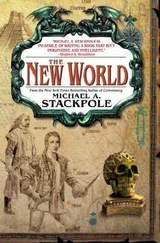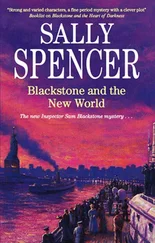Above St. John's Bluff the shore curves in a semicircle, along which the water runs in a deep, strong current, which has half cut away the flat knoll above mentioned, and encroached greatly on the bluff itself. The formation of the ground, joined to the indicatons furnished by Laudonniere and Le Moyne, leave little doubt that the fort was built on the knoll.
I La Caille, as before mentioned, was Laudonniere's sergeant. The feudal rank of sergeant, it will be remembered, was widely different from the modern grade so named, and was held by men of noble birth. Le Moyne calls La Caille "Captain."
Laudonniere in Hakinyt, III. 406. Brinton, Floridian Peninsula, thinks there is truth in the story, and that Lake Weir, in Marion County, is the Lake of Sarrope. I give these romantic tales as I find them.
This scene is the subject of Plate XII. of Le Moyne.
Le Moyne drew a picture of the fight (Plate XIII.). In the foreground Ottigny is engaged in single combat with a gigantic savage, who, with club upheaved, aims a deadly stroke at the plumed helmet of his foe; but the latter, with target raised to guard his head, darts under the arms of the naked Goliath, and transfixes him with his sword.
For Hawkins, see the three narratives in Hakinyt, III. 594; Purchas, IV. 1177; Stow, Chron., 807; Biog. Briton., Art. Hawkins; Anderson, History of Commerce, I. 400.
He was not knighted until after the voyage of 1564-65; hence there is an anachronism in the text. As he was held "to have opened a new trade," he was entitled to bear as his crest a "Moor" or negro, bound with a cord. In Fairhairn's Crests of Great Britain and Ireland, where it is figured, it is described, not as a negro, but as a "naked man." In Burke's Landed Gentry, it is said that Sir John obtained it in honor of a great victory over the Moors! His only African victories were in kidnapping raids on negro villages. In Letters on Certain Passages in the Life of Sir John Hawkins, the coat is engraved in detail. The "demi-Moor" has the thick lips, the flat nose, and the wool of the unequivocal negro.
Sir John became Treasurer of the Royal Navy and Rear-Admiral, and founded a marine hospital at Chatham.
"Better a ruined kingdom, true to itself and its king, than one left unharmed to the profit of the Devil and the heretics."– Correspondance de Philippe II., cited by Prescott, Philip IL, Book III. c. 2, note 36.
"A prince can do nothing more shameful, or more hurtful to himself, than to permit his people to live according to their conscience." The Duke of Alva, in Davila, Lib. III. p. 341.
Cartas escritas al Rep per el General Pero Menendez de Aeilgs. These are the official despatches of Menendez, of which the originals are preserved in the archives of Seville. They are very voluminous and minute in detail. Copies of them were ohtained by the aid of Buckiugham Smith, Esq., to whom the writer is also indebted for various other documents from the same source, throwing new light on the events descrihed. Menendez calls Port Royal St. Elena, "a name afterwards applied to the sound which still retains it." Compare Historical Magazine, IV. 320.
This was not so remarkable as it may appear. Charnock, History of Marine Architecture gives the tonnage of the ships of the Invincible Armada. The flag-ship of the Andalusian squadron was of fifteen hundred and fifty tons; several were of about twelve hundred.
Barcia, 69. The following passage in one of the unpublished letters of Menendez seems to indicate that the above is exaggerated: "Your Majesty may he assured by me, that, had I a million, more or less, I would employ and spend the whole in this undertaking, it being so greatly to the glory of the God our Lord, and the increase of our Holy Catholic Faith, and the service and authority of your Majesty and thus I have offered to our Lord whatever He shall give me in this world, Whatever I shall possess, gain, or acquire shall be devoted to the planting of the Gospel in this land, and the enlightenment of the natives thereof, and this I do promise to your Majesty." This letter is dated 11 Septemher, 1565. I have examined the country on the line of march of Menendez. In many places it retains its original features.












